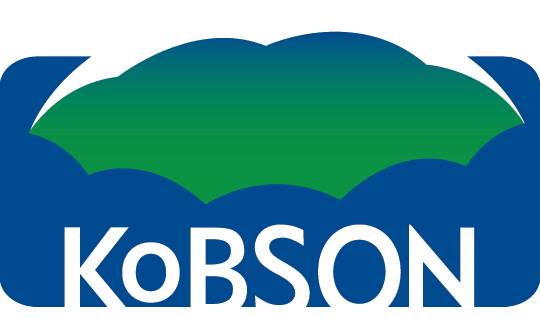DOI: 10.5937/jaes16-16582
This is an open access article distributed under the CC BY-NC-ND 4.0 terms and conditions.

Volume 16 article 548 pages: 416 - 423
The
energy crisis encourages the development of renewable energy; one of the
potential renewable energy is wind. In the field of wind turbine there is a
two-way development of the utilization of wind energy, first by making a large
wind turbine, the second by making a wind farm energy with a relatively small
wind turbine.This hybrid VAWT wind turbine (Sultan Wind Turbine) is designed to
work optimally on a farm array, on a wind turbine farm array will always cause
a wake effect that will reduce overall wind turbine and farm array performance,
an investigation with a CFD simulation is required to predict how far the wake
effect will be before farm array build.The use of simulation software has been
widely used to predict the effects of this wake, and experiments in the
laboratory have also been done to predict the effects of a wake as well.This study'spurpose
is to predict the distance area of the recovery wake behind the wind turbine,
this distance which will be the reference distance between wind turbine units
and determining the density of the turbine in a farm. Simulation using
Computational Fluid Dynamics (CFD), with a method of Multi Frame Reference
(MRF). Analysis using descriptive and inferential method in statistics such as
mean, Kolmogorov-Smirnov Z and KruskalWalis test.From the analysis of
simulation results and data processing descriptively and analytic statistic, it
can be concluded from the data given, the distance of x/D=4, wind speed has
recovery to the value near the input speed and no significant change to x/D= 9.
Then it can be concluded that the distance between two wind turbines that can
be used is a distance of 3.6 meters.These data suggest that the hybrid farm
array VAWT savonius and darrieus have a higher power density compared to HAWT.
From this power density calculation the hybrid VAWT has a greater electrical
potential up to 300 percent compared to the HAWT farm array.
Dabiri JO. Potential
order-of-magnitude enhancement of wind farm power density via counter-rotating
vertical-axis wind turbine arrays. Journal of Renewable and Sustainable
Energy. 2011;3:043104.
Robert WW, Sebastian
L, John OD. Fish schooling as a basis for vertical axis wind turbine farm
design. Bioinspiration & Biomimetics. 2010;5:035005.
Bartl J, Pierella F,
Sætrana L. Wake Measurements Behind an Array of Two Model Wind Turbines. Energy
Procedia. 2012;24:305-12.
Li Qa, Maeda T,
Kamada Y, Ogasawara T, Nakai A, Kasuya T. Investigation of power performance
and wake on a straight-bladed vertical axis wind turbine with field
experiments. Energy. 2017.
Rolin VFC,
Porté-Agel F. Experimental investigation of vertical-axis wind-turbine wakes in
boundary layer flow. Renewable Energy. 2018;118:1-13.
Gao X, Yang H, Lu L.
Optimization of wind turbine layout position in a wind farm using a newly-developed
two-dimensional wake model. Applied Energy. 2016;174:192-200.
Emami A, Noghreh P.
New approach on optimization in placement of wind turbines within wind farm by
genetic algorithms. Renewable Energy. 2010;35:1559- 64.
Bansal JC, Farswan
P. Wind farm layout using biogeography-based optimization. Renewable Energy.
2017;107:386-402.
Serrano González J,
Trigo García ÁL, Burgos Payán M, Riquelme Santos J, González Rodríguez ÁG.
Optimal wind-turbine micro-siting of offshore wind farms: A grid-like layout
approach. Applied Energy. 2017;200:28-38.
Lam HF, Peng HY.
Measurements of the wake characteristics of co- and counter-rotating twin
H-rotor vertical axis wind turbines. Energy. 2017;131:13-26.
Bukala J, Damaziak
K, Kroszczynski K, Krzeszowiec M, Malachowski J. Investigation of parameters
influencing the efficiency of small wind turbines. Journal of Wind Engineering
and Industrial Aerodynamics. 2015;146:29-38.
Hezaveh SH, Bou-Zeid
E, Lohry MW, Martinelli L. Simulation and wake analysis of a single vertical
axis wind turbine. Wind Energy. 2017;20:713-30.
Erwin Erwin SW, Erny
Listijorini, Rina Lusiani, Tresna P Soemardi. Development of the Third
Darrieus Blade of Sultan Wind Turbine for Low Wind Speed. Applied Mechanics and
Materials. 2015;758:7.
González-Longatt F,
Wall P, Terzija V. Wake effect in wind farm performance: Steady-state and
dynamic behavior. Renewable Energy. 2012;39:329-38.
Zuo W, Wang X, Kang
S. Numerical simulations on the wake effect of H-type vertical axis wind
turbines. Energy. 2016;106:691-700.
Mohamed MH, Ali AM,
Hafiz AA. CFD analysis for H-rotor Darrieus turbine as a low speed wind energy
converter. Engineering Science and Technology, an International Journal.
2015;18:1-13.
Nobile R, Vahdati M,
Barlow JF, Mewburn-Crook A. Unsteady flow simulation of a vertical axis augmented
wind turbine: A two-dimensional study. Journal of Wind Engineering and
Industrial Aerodynamics. 2014;125:168-79.
Liu J, Lin H,
Purimitla SR. Wakefield studies of tidal current turbines with different
numerical methods. Ocean Engineering. 2016;117:383-97.
Rukthong W,
Weerapakkaroon W, Wongsiriwan U, Piumsomboon P, Chalermsinsuwan B. Integration
of computational fluid dynamics simulation and statistical factorial
experimental design of thick-wall crude oil pipeline with heat loss. Advances
in Engineering Software. 2015;86:49-54.
Prošek A, Končar B,
Leskovar M. Uncertainty analysis of CFD benchmark case using optimal statistical
estimator. Nuclear Engineering and Design. 2017;321:132-43.
Hemsch MJ.
Statistical Analysis of Computational Fluid Dynamics Solutions from the Drag
Prediction Workshop. Journal of Aircraft. 2004;41:95-103.
Ghosh A, Biswas A,
Sharma KK, Gupta R. Computational analysis of flow physics of a combined three
bladed Darrieus Savonius wind rotor. Journal of the Energy Institute.
2015;88:425-37.
Chowdhury H, Mustary
I, Loganathan B, Alam F. Adjacent Wake Effect of a Vertical Axis Wind Turbine.
Procedia Engineering. 2015;105:692-7.
Posa A, Parker CM,
Leftwich MC, Balaras E. Wake structure of a single vertical axis wind turbine.
International Journal of Heat and Fluid Flow. 2016;61:75- 84.
Matthias Kinzel QM,
John O. Dabiri. Energy exchange in an array of vertical-axis wind turbines.
Journal of Turbulence. 2012;13:13.
Sedaghatizadeh N,
Arjomandi M, Kelso R, Cazzolato B, Ghayesh MH. Modelling of wind turbine wake
using large eddy simulation. Renewable Energy. 2018;115:1166-76.
Miao W, Li C, Pavesi
G, Yang J, Xie X. Investigation of wake characteristics of a yawed HAWT and its
impacts on the inline downstream wind turbine using unsteady CFD. Journal of
Wind Engineering and Industrial Aerodynamics. 2017;168:60-71.
Naderi S, Torabi F.
Numerical investigation of wake behind a HAWT using modified actuator disc
method. Energy Conversion and Management. 2017;148:1346-57.
Hu D-m, Du Z-h. Near
Wake of a Model Horizontal-Axis Wind Turbine. Journal of Hydrodynamics, Ser B.
2009;21:285-91.
Hemsch, M. J.
(2004). "Statistical Analysis of Computational Fluid Dynamics Solutions
from the Drag Prediction Workshop." Journal of Aircraft 41(1): 95- 103.
Suto, H., Y.
Hattori, et al. (2017). "Computational fluid dynamics simulation and
statistical procedure for estimating wide-area distributions of airborne sea
salt considering local ground conditions." Structure and Infrastructure
Engineering 13(10): 1359-1371.
Migliori, S., C.
Chiastra, et al. (2017). "A framework for computational fluid dynamic
analyses of patient-specific stented coronary arteries from optical coherence
tomography images." Medical Engineering & Physics 47: 105-116.
Thönnißen, F., M.
Marnett, et al. (2016). "A numerical analysis to evaluate Betz's Law for
vertical axis wind turbines." Journal of Physics: Conference Series
753(2): 022056.
Erwin, E., P. S.
Tresna, et al. (2018). "Design optimization of hybrid biomass and wind
turbine for minapolitan cluster in Domas, Serang, Banten, Indonesia." IOP
Conference Series: Earth and Environmental Science 105(1): 012010.
Satria, D., Haryadi,
et al. (2016). "Design of drying chamber and biomass furnace for
sun-biomass hybrid rice-drying machine." AIP Conference Proceedings
1717(1): 050015.







